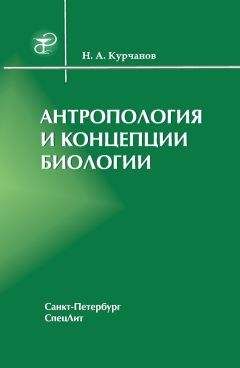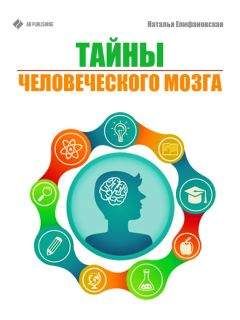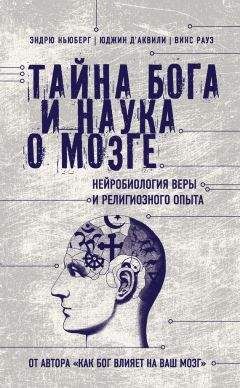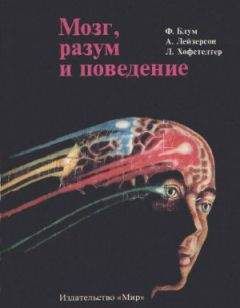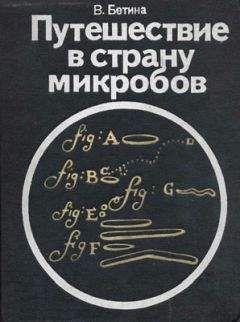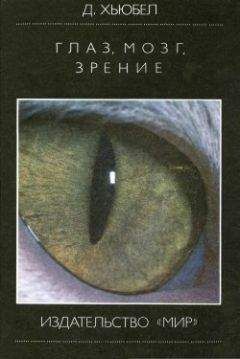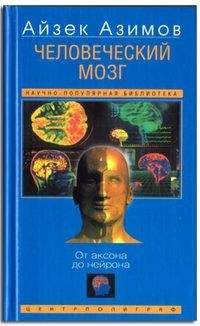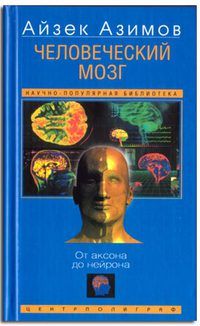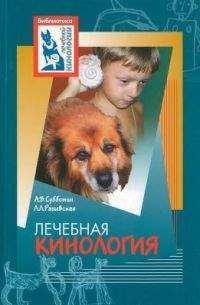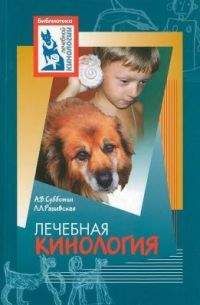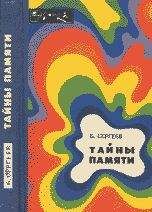Вилейанур Рамачандран - Мозг рассказывает. Что делает нас людьми
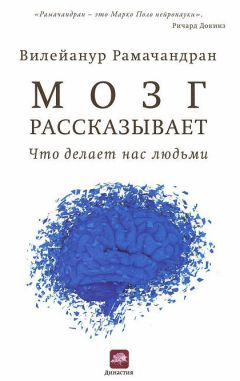
Скачивание начинается... Если скачивание не началось автоматически, пожалуйста нажмите на эту ссылку.
Жалоба
Напишите нам, и мы в срочном порядке примем меры.
Описание книги "Мозг рассказывает. Что делает нас людьми"
Описание и краткое содержание "Мозг рассказывает. Что делает нас людьми" читать бесплатно онлайн.
Непостижимые загадки (как человек может хотеть ампутировать себе руку? почему рисунки аутичного ребенка превосходят по своему мастерству рисунки Леонардо? что такое чувство прекрасного? откуда берется в нас сострадание? как может человечество передавать культуру от поколения к поколению? что породило речь? где живет самосознание?) находят свое объяснение на уровне нейронов мозга — благодаря простым и гениальным экспериментам B. C. Рамачандрана. Он великий ученый современности, но у него еще и искрометное чувство юмора — и вот вам, пожалуйста, блестящее повествование о странном человеческом поведении и работе мозга.
Самые последние достижения науки о мозге. Где в мозге кроется то, что делает человека человеком? B. C. Рамачандран назван одним из ста самых выдающихся людей XX века.
Mitchell, J. K. (1831). On a new practice in acute and chronic rheumatism. The American Journal of the Medical Sciences, 8(15), 55–64.
Mitchell, S. W. (1872). Injuries of nerves and their consequences. Philadelphia. J. B. Lippincott.
Mitchell, S. W., Morehouse, G. R., & Keen, W. W. (1864). Gunshot wounds and other injuries of nerves. Philadelphia: J. B. Lippincott.
’Mithen, S. (1999). The prehistory of the mind. London: Thames & Hudson.
Money, J., Jobaris, R., & Furth, G. (1977). Apotemnophilia: Two cases of self-demand amputation as a paraphilia. Journal of Sex Research, 13,115–125.
Moseley, G. L., Olthof, N., Venema, A., Don, S., Wijers, М., Gallace, A., et al. (2008). Psychologically induced cooling of a specific body part caused by the illusory ownership of an artificial counterpart. Proceedings of the National Academy of Sciences of the USA, 105(35), 13169-13173.
Moyer, R. S., & Landauer, Т. K. (1967). Time required for judgements of numerical inequality. Nature, 215(5109), 1519–1520.
Nabokov, V. (1966). Speak, memory: An autobiography revisited. New York: G. P. Putnam’s Sons.
Naeser, M. A., Martin, P. I., Nicholas, М., Baker, E. H., Seekins, H., Kobayashi М., et al. (2005). Improved picture naming in chronic aphasia after TMS to part of right Broca’s area: An open-protocol study. Brain and Language, 93(1), 95-105.
Nuckolls, J. B. (1999). The case for sound symbolism. Annual Review of Anthropology, 28,225–252.
Oberman, L. М., Hubbard, E. М., McCleery, J. P., Altschuler, E. L., & Ramachandran, V. S. (2005). EEG evidence for mirror neuron dysfunction in autism spectrum disorders. Cognitive Brain Research, 24(2), 190–198.
Oberman, L. M.McCleery, J. P., Ramachandran, V. S., & Pineda, J. A. (2007). EEG evidence for mirror neuron activity during the observation of human and robot actions: Toward an analysis of the human qualities of interactive robots. Neurocomputing, 70,2194–2203.
Oberman, L. М., Pineda, J. A., & Ramachandran, V. S. (2007). The human mirror neuron system: A link between action observation and social skills. Social Cognitive and Affective Neuroscience, 2,62–66.
Oberman, L. М., & Ramachandran, V. S. (2007a). Evidence for deficits in mirror neuron functioning, multisensory integration, and sound-form symbolism in autism spectrum disorders. Psychological Bulletin, 133(2), 310–327.
Oberman, L. М., & Ramachandran, V. S. (2007b). The simulating social mind: The role of the mirror neuron system and simulation in the social and communicative deficits of autism spectrum disorders. Psychological Bulletin, 133(2), 310–327.
Oberman, L. М., & Ramachandran, V. S. (2008). How do shared circuits develop? Behavioral and Brain Sciences, 31,1-58.
Oberman, L. М., Ramachandran, V. S., & Pineda, J. A. (2008). Modulation of mu suppression in children with autism spectrum disorders in response to familiar or unfamiliar stimuli: the mirror neuron hypothesis. Neuropsychologia, 46, 1558–1565.
Oberman, L. М., Winkielman, P., & Ramachandran, V. S. (2007). Face to face: Blocking facial mimicry can selectively impair recognition of emotional faces. Social Neuroscience, 2(3), 167–178.
Palmeri, T. J., Blake, R., Marois, R., Flanery, M. A., & Whetsell, W., Jr.
(2002). The perceptual reality of synesthetic colors. Proceedings of the National Academy of Sciences of the USA, 99,4127–4131.
Penfield, W., & Boldrey, E. (1937). Somatic motor and sensory representation in the cerebral cortex of man as studied by electrical stimulation. Brain, 60, 389–443.
‘Pettigrew, J. D., & Miller, S. M. (1998). A “sticky” interhemispheric switch in bipolar disorder? Proceedings of the Royal Society of London, Series B: Biological Sciences, 265(1411), 2141–2148.
Pinker, S. (1997). How the mind works. New York: W. W. Norton.
’Posner, М., & Raichle, M. (1997). Images of the mind. New York: W. H. Freeman.
'Premack, D., & Premack, A. (2003). Original intelligence. New York: McGraw-Hill.
’Quartz, S., & Sejnowski, T. (2002). Liars, lovers and heroes. New York: William Morrow.
Ramachandran, V. S. (1993). Behavioral and magnetoencephalographic correlates of plasticity in the adult human brain. Proceedings ofthe National Academy of Sciences of the USA, 90,10413-10420.
Ramachandran, V. S. (1994). Phantom limbs, neglect syndromes, repressed mem-iories, and Freudian psychology. International Review of Neurobiology, 37,291–333.
Ramachandran, V. S. (1996, October). Decade of the brain. Symposium organized by the School of Social Sciences, University of California, San Diego, La Jolla.
Ramachandran, V. S. (1998). Consciousness and body image: Lessons from phantom limbs, Capgras syndrome and pain asymbolia. Philosophical Transactions of the Royal Society of London, Series B: Biological Sciences, 353(1377), 1851–1859.
Ramachandran, V. S. (2000, June 29). Mirror neurons and imitation as the driving force behind “the great leap forward” in human evolution. Edge: The Third Culture, Retrieved from http://www.edge.org/3rd culture/ramachandran/rama chandran_ pl.html., pp. 1–6.
Ramachandran, V. S. (2003). The phenomenology of synaesthesia. Journal of Consciousness Studies, 10(8), 49–57.
Ramachandran, V. S. (2004). The astonishing Francis Crick. Perception, 33(10), 1151–1154.
Ramachandran, V. S. (2005). Plasticity and functional recovery in neurology. Clinical Medicine, 5(4), 368–373.
Ramachandran, V. S., & Altschuler, E. L. (2009). The use of visual feedback, in particular mirror visual feedback, in restoring brain function. Brain, 132(7), 16.
Ramachandran, V. S., Altschuler, E. L., & Hillyer, S. (1997). Mirror agnosia. Proceedings of the Royal Society of London, Series B: Biological Sciences, 264,645–647.
Ramachandran, V. S., & Azoulai, S. (2006). Synesthetically induced colors evoke apparent-motion perception. Perception, 35(11), 1557–1560.
Ramachandran, V. S., & Blakeslee, S. (1998). Phantoms in the brain. New York: William Morrow.
Ramachandran, V. S., & Brang, D. (2008). Tactile-emotion synesthesia. Neurocase, 14(5), 390–399.
Ramachandran, V. S., & Brang, D. (2009). Sensations evoked in patients with amputation from watching an individual whose corresponding intact limb is being touched. Archives of Neurology, 66(10), 1281–1284.
Ramachandran, V. S., Brang, D., & McGeoch, P. D. (2009). Size reduction using Mirror Visual Feedback (MVF) reduces phantom pain. Neurocase, 15(5), 357–360.
Ramachandran, V. S., & Hirstein, W. (1998). The perception of phantom limbs. The D. O. Hebb lecture. Brain, 121(9), 1603–1630.
Ramachandran, V. S., Hirstein, W., Armel, К. C., Tecoma, E., & Iragul, V. (1997, October 25–30). The neural basis of religious experience. Paper presented at the 27th annual meeting of the Society for Neuroscience, New Orleans, LA.
Ramachandran, V. S., & Hubbard, E. M. (2001a). Psychophysical investigations into the neural basis of synaesthesia. Proceedings of the Royal Society of London, Series B: Biological Sciences, 268(1470), 979–983.
Ramachandran, V. S., & Hubbard, E. M. (2001b). Synaesthesia: A window into perception, thought and languag t. Journal of Consciousness Studies, 8(12), 334.
Ramachandran, V. S., & Hubbard, E. M. (2002a). Synesthetic colors support symmetry perception and apparent motion. Abstracts of the Psychonomic Society’s 43rd Annual Meeting, 7,79.
Ramachandran, V. S., & Hubbard, E. M. (2002b, November). Synesthetic colors support symmetry perception and apparent motion. Poster session presented at the 43rd annual meeting of the Psychonomic Society, Kansas City, MO.
Ramachandran, V. S., & Hubbard, E. M. (2003). Hearing colors, tasting shapes. Scientific American, 288(5), 42–49.
Ramachandran, V. S., & Hubbard, E. M. (2005a). The emergence of the human mind: Some clues from synesthesia. In L. C. Robertson & N. Sagiv (Eds.), Synesthesia: Perspectives from cognitive neuroscience (pp. 147–190). New York: Oxford University Press.
Ramachandran, V. S., & Hubbard, E. M. (2005b). Synesthesia: What does it tell us about the emergence of qualia, metaphor, abstract thought, and language? In J. L. van Hemmen & T. J. Sejnowski (Eds.), 23problems in systems neuroscience. Oxford, UK: Oxford University Press.
Ramachandran, V. S., & Hubbard, E. M. (2006, October). Hearing colors, tasting shapes. Secrets of the senses [Special issue]. Scientific American, 76–83.
Ramachandran, V. S., & McGeoch, P. D. (2007). Occurrence of phantom genitalia after gender reassignment surgery. Medical Hypotheses, 69(5), 10011003.
Ramachandran, V. S., McGeoch, P. D., & Brang, D. (2008).
Apotemnophilia: A neurological disorder with somatotopic alterations in SCR and MEG activation. Paper presented at the annual meeting of the Society for Neuroscience, Washington, DC.
Ramachandran, V. S., & Oberman, L. M. (2006a, May 13). Autism: The search for Steven. New Scientist, pp. 48–50.
Ramachandran, V. S., & Oberman, L. M. (2006b, November). Broken mirrors: A theory of autism. Scientific American, 295(5), 62–69.
Ramachandran, V. S., & Rogers-Ramachandran, D. (2008). Sensations referred to a patient’s phantom arm from another subjects intact arm: Perceptual correlates of mirror neurons. Medical Hypotheses, 70(6), 1233–1234.
Ramachandran, V. S., Rogers-Ramachandran, D., & Cobb, S. (1995). Touching the phantom limb. Nature, У71,489–490.
‘Restak, R. (2000). Mysteries of the mind. Washington, DC: National Geographic Society.
Rizzolatti, G., Sc Arbib, M. A. (1998). Language within our grasp. Trends in Neurosciences, 21,188–194.
Rizzolatti, G, Fadiga, L., Fogassi, L & Gallese, V. (1996). Premotor cortex and the recognition of motor actions. Cognitive Brain Research, 3,131–141.
Rizzolatti, G., & Destro, М. E (2008). Mirror neurons. Scholarpedia, 3(1).
Rizzolatti, G., Fogassi, L., & Gallese, V. (2001). Neurophysiological mechanisms underlying the understanding and imitation of action. Nature Reviews Neuroscience, 2, 661–670.
Ro, Т., Fame, A., Johnson, R. М., Wedeen, V., Chu, Z., Wang, Z. J., et al. (2007). Feeling sounds after a thalamic lesion. Annals of Neurology, 62(5), 433441.
‘Robertson, I. (2001). Mind sculpture. New York: Bantam Books. Robertson, L. C., & Sagiv, N. (2005). Synesthesia: Perspectives from cognitive neuroscience. New York: Oxford University Press.
’Rock, I., & Victor, J. (1964). Vision and touch: An experimentally created conflict between the two senses. Science, 143, 594–596.
Rosen, B., & Lundborg, G. (2005). Training with a mirror in rehabilitation of the hand. Scandinavian Journal of Plastic and Reconstructive Surgery and Hand Surgery, 39(104–108).
Rouw, R., & Scholte, H. S. (2007). Increased structural connectivity in grapheme-color synesthesia. Nature Neuroscience, 10(6), 792–797.
Saarela, М. V., Hlushchuk, Y., Williams, A. C., Schurmann, М., Kalso, E., & Hari, R.
(2007). The compassionate brain: Humans detect intensity of pain from another’s face. Cerebral Cortex, 17(1), 230–237.
Sagiv, N., Simner, J., Collins, J., Butterworth, B., & Ward, J. (2006). What is the relationship between synaesthesia and visuo-spatial number forms? Cognition, 101(1), 114–128.
’Sacks, O. (1985). The man who mistook his wife for a hat. New York: HarperCollins.
’Sacks, O. (1995). An anthropologist on Mars. New York: Alfred A. Knopf.
’Sacks, O. (2007). Musicophilia: Tales of music and the brain. New York: Alfred A. Knopf.
Sathian, K., Greenspan, A. I., & Wolf, S. L. (2000). Doing it with mirrors: A case study of a novel approach to neurorehabilitation. Neurorehabilitation and Neural Repair, 14,73–76.
Saxe, R., & Wexler, A. (2005). Making sense of another mind: The role of the right temporo-parietal junction. Neuropsychologia, 43,1391–1399.
’Schacter, D. L. (1996). Searching for memory. New York: Basic Books.
Schiff, N. D., Giacino, J. Т., Kalmar, K., Victor, J. D., Baker, K., Gerber, М., et al. (2007). Behavioural improvements with thalamic stimulation after severe traumatic brain injury. Nature, 448,600–603.
Selles, R. W., Schreuders, T. A., & Stam, H. J. (2008). Mirror therapy in patients with causalgia (complex regional pain syndrome type II) following peripheral nerve injury: Two eases. Journal of Rehabilitation Medicine, 40,312.
Подписывайтесь на наши страницы в социальных сетях.
Будьте в курсе последних книжных новинок, комментируйте, обсуждайте. Мы ждём Вас!
Похожие книги на "Мозг рассказывает. Что делает нас людьми"
Книги похожие на "Мозг рассказывает. Что делает нас людьми" читать онлайн или скачать бесплатно полные версии.
Мы рекомендуем Вам зарегистрироваться либо войти на сайт под своим именем.
Отзывы о "Вилейанур Рамачандран - Мозг рассказывает. Что делает нас людьми"
Отзывы читателей о книге "Мозг рассказывает. Что делает нас людьми", комментарии и мнения людей о произведении.






